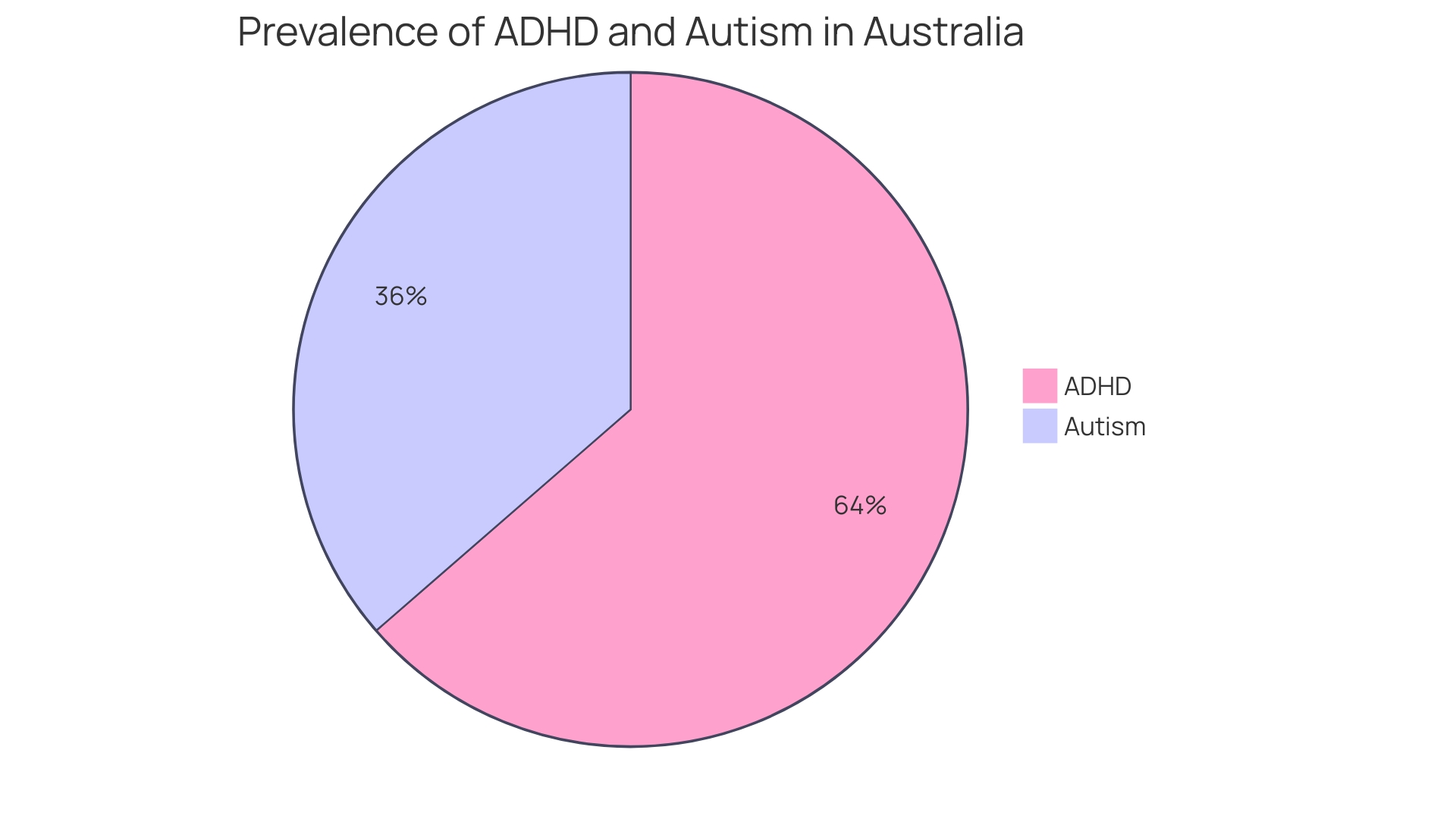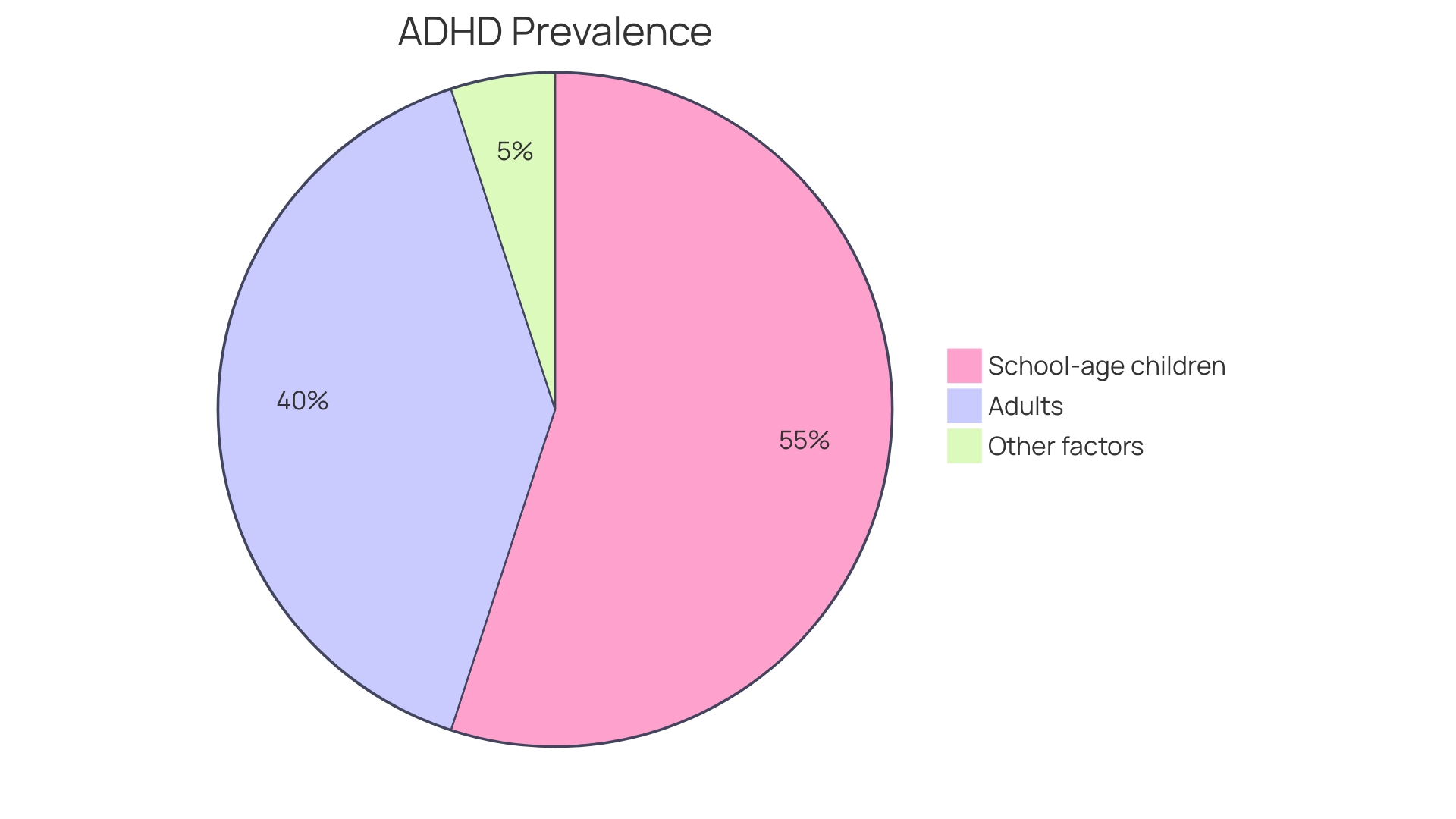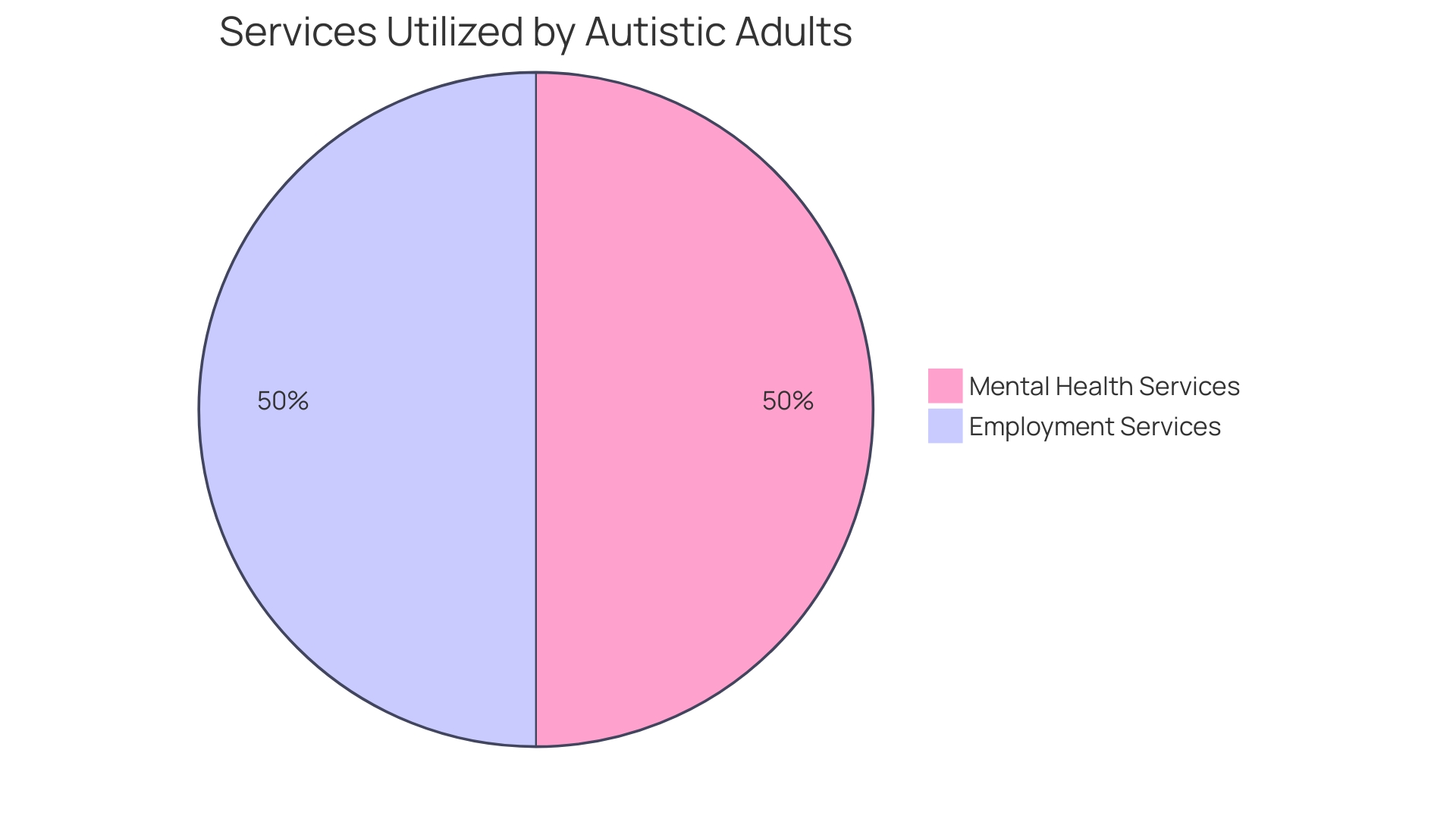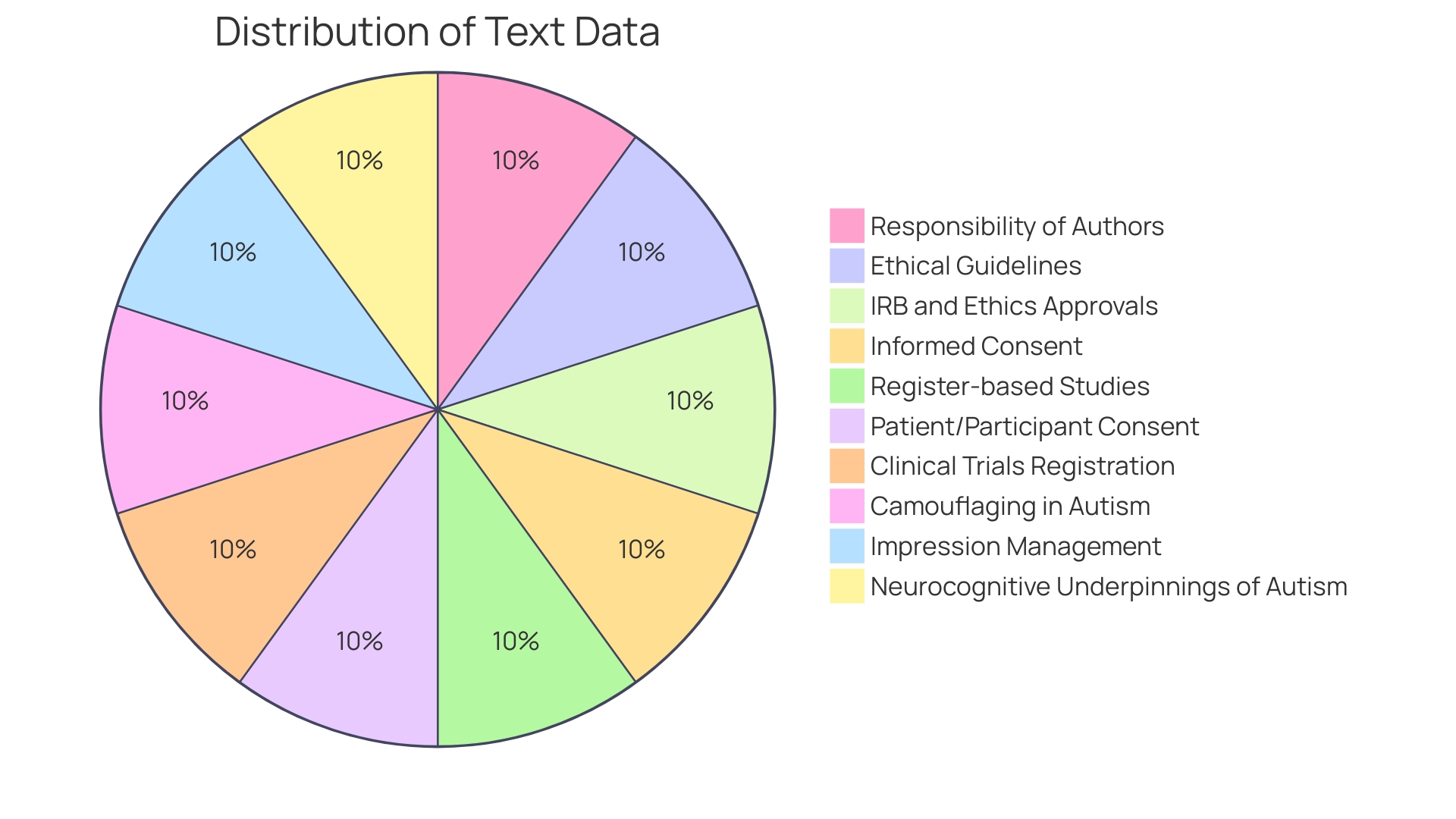Introduction
Autism spectrum disorder (ASD) is a complex condition that affects individuals across their lifespan, including adulthood. However, many adults with ASD remain undiagnosed or misdiagnosed, unaware of the underlying factors influencing their daily experiences. Understanding the core signs of autism, such as difficulties with social skills, communication challenges, and repetitive behaviors, is crucial in identifying ASD in adults.
Additionally, adults with autism may exhibit a profound depth in specific interests, a preference for routine, and heightened sensitivity to sensory stimuli. It is important to discern accurate information about autism from the abundance of misleading content found on social media platforms. Recent advancements in research, such as machine learning models, hold promise for expanding access to diagnosis and reducing healthcare disparities for minority and low-income families.
This article delves into the unique challenges faced by autistic adults, particularly in areas such as social communication, repetitive behaviors, sensory processing, and relationships. Understanding these challenges and providing evidence-based support is essential for the well-being and inclusion of autistic adults in society.
Main Signs of Autism in Adults
Autism spectrum disorder (ASD) is an intricate condition that presents across a wide array of behaviors and interactions. It's not only prevalent in childhood but persists into adulthood, manifesting in unique ways that can often go unrecognized. Recent findings reveal that approximately 1 in 45 adults in the United States are diagnosed with ASD.
This statistic suggests that many individuals may reach adulthood without a clear diagnosis or might be misdiagnosed, leaving them unaware of the autism-related underpinnings influencing their daily experiences.
Understanding autism's hallmark traits—difficulties with social skills, communication challenges, and a tendency toward repetitive behaviors—is crucial in identifying ASD in adults. These core signs are consistent across the lifespan. Adults may also exhibit a profound depth in specific interests, a preference for routine, and heightened sensitivity to sensory stimuli.
The conversation around autism has evolved, with many in the autistic and neurodivergent community embracing self-diagnosis. This shift comes as a response to the limitations and inconclusive outcomes often associated with medical testing for autism, which can be both costly and emotionally taxing. For some, an official diagnosis substantiates their experiences and informs others, eradicating doubt and fostering acceptance.
Moreover, the value of neurodiversity is gaining recognition within society. Initiatives like the neurodiversity pilot launched by the National Geospatial-Intelligence Agency exemplify how embracing neurodivergent individuals, including those with autism, can enrich the workforce and enhance organizational missions.
Amidst the proliferation of information about autism, particularly on social media platforms like TikTok, it's imperative to discern accurate information from the misleading or false content that abounds. Studies have shown that a significant portion of autism-related content on such platforms can be inaccurate, highlighting the need for reliable, evidence-based resources.
In the realm of research, innovative strides are being made with tools like AutMedAI, a machine-learning model that demonstrates an approximately 80% accuracy rate in identifying autism in children. This advancement holds promise for expanding access to diagnosis and reducing healthcare disparities, particularly for minority, low-income, and rural families who historically face delays in receiving an autism diagnosis.

Social Communication and Social Interaction Challenges
Autism in adult women can manifest in distinct ways, particularly when it comes to social communication and interaction. These women might experience difficulty interpreting both verbal and nonverbal communication cues, which could hinder their ability to initiate or engage in conversations. Understanding the nuances of social cues or grasping the perspectives of others can also be challenging.
Such social intricacies can significantly impact their ability to develop and sustain meaningful relationships.
Recent studies have emphasized that autistic individuals often encounter barriers in effective communication, which can lead to an increased risk of co-occurring mental health issues. For example, research published in Molecular Autism indicates that autistic people may process social signals differently, which can affect social learning and cognition. Moreover, there is a distinct lack of research into the adult years of autistic individuals, especially in middle and older adulthood, as highlighted by Dr. Gregory Wallace from The George Washington University.
His work calls attention to the significant gap in our understanding beyond young adulthood.
In the realm of social interaction, there's a striking revelation about smiles. Genuine smiles, which involve involuntary activation of eye muscles, can be differentiated from posed smiles that may mask true feelings. This distinction is crucial in social communication, as autistic individuals might interpret such cues differently.
Additionally, findings on intergroup bias reveal that people tend to favor those similar to themselves, which might influence how autistic women perceive and are perceived in social interactions.
Statistics from the EU underscore the importance of communication skills in the workplace, with over a third of employed individuals spending at least half of their work time on internal communication. This highlights the pivotal role that effective communication plays across various aspects of life, including professional environments where autistic adults may face unique challenges.
Understanding the complexities and providing evidence-based practices to support autistic adults is essential for their inclusion and well-being. This involves recognizing the need for person-centered care and shared decision-making, which are fundamentally reliant on effective communication. By doing so, we can ensure that autistic adults are not only heard but are also provided with care that resonates with their individual needs and circumstances.

Repetitive or Restricted Behaviors, Interests, or Activities
Adults with autism may exhibit distinctive repetitive behaviors or have intense, focused interests, often seen as a hallmark of the condition. These can manifest as physical movements like hand-flapping or rocking, and deep, passionate engagement in specific subjects. While such behaviors might seem unusual, they can provide a soothing sense of structure and familiarity.
Yet, what we understand about autism in adulthood is vastly under-researched, especially compared to the wealth of knowledge on children and adolescents with autism.
The complexity of adult life presents various challenges for autistic individuals, similar to those faced by neurotypical adults, but with unique layers due to sensory sensitivities, difficulty in interpreting social cues, and executive functioning challenges. For instance, transitions such as starting college or a new job, living independently, and managing relationships can be particularly demanding.
Despite these obstacles, many autistic adults, like Sam Wolfe, find creative ways to navigate adulthood, leveraging their special interests or adjusting their environments to better suit their needs. This ingenuity is often born out of necessity, as formal support systems for autistic adults are scarce.
Moreover, recent research, including a study at The Center for Discovery using AI and machine learning, is beginning to shed light on predicting and mitigating challenging behaviors in autistic individuals. Such advancements could greatly enhance the quality of life for autistic adults.
It is crucial to recognize that with age, autistic adults continue to develop strategies to manage life's hurdles. As reported by the Centers for Disease Control and Prevention, 1 in 45 adults in the U.S. are diagnosed with ASD, indicating that many adults may live with undiagnosed or misdiagnosed autism. Knowledge of the common signs of autism in adults is essential for better understanding and support.

Sensory Processing and Sensory Sensitivities
For adults with autism, sensory stimuli can often be overwhelming, leading to significant challenges in daily life. Sensory processing sensitivities, which include both hyper-sensitivity (intense responses to environmental stimuli) and hypo-sensitivity (diminished responses), are common characteristics of autism. These sensitivities can manifest across all senses—visual, auditory, gustatory, olfactory, and tactile—impacting an individual's comfort and ability to function in various settings.
Adults on the autism spectrum might find themselves particularly sensitive to lights and sounds, which can make public spaces like shopping malls or transportation hubs stressful. This heightened or reduced sensitivity also extends to other senses such as taste, smell, and touch, leading to strong preferences or aversions to certain foods, scents, or textures. Some individuals may seek out specific sensory experiences to self-soothe or avoid others that cause distress.
Understanding these sensory challenges is crucial for creating supportive environments at home, in the workplace, and in educational settings. By recognizing the profound impact sensory processing can have on behavior and learning, caregivers and professionals can employ practical strategies to assist those with autism, ensuring a better quality of life and inclusion in society.
Unique Characteristics in Autistic Women
Autistic women often engage in 'masking,' a term that signifies the exhausting effort to appear neurotypical. This adaptation can be incredibly demanding, leading to burnout and making it difficult for healthcare professionals to recognize their autistic traits. Studies have shown that autistic individuals may experience hypersensitivity or hyposensitivity to sensory stimuli, such as bright lights and loud noises, which can influence their health experiences and should be considered during medical care.
Research indicates that the pain of autistic individuals is frequently not adequately addressed by healthcare providers. For example, there are reports of autistic women not receiving appropriate pain relief during labor due to their expressions of pain not being acknowledged. Addressing such issues is essential in improving the healthcare experience for autistic women, particularly during critical life stages like pregnancy and menopause.
The need for improved understanding and support is further underscored by recent findings that autistic traits in women, particularly those in the clinical range of the Autism-Spectrum Quotient, correlate with increased risks of adverse birth outcomes such as preterm delivery and smaller-than-average newborn size. These correlations persist even when adjusting for various factors, emphasizing the importance of recognizing and supporting autistic women's unique needs during pregnancy.
A more inclusive and sensitive approach to diagnosing autism in women is necessary, considering the unique ways in which they may present symptoms. Traditional diagnostic criteria, which were primarily based on male presentations of autism, may overlook the distinct patterns of behavior and challenges that autistic women face, including differences in repetitive behaviors, emotional regulation, and self-harming tendencies like eating disorders.
By adopting an intersectional perspective that acknowledges the diverse experiences of autistic girls and women, and by ensuring that healthcare professionals are attentive to their questions and concerns, we can move towards a healthcare system that better serves the needs of the autistic community. This comprehensive approach is not only crucial for recognizing autism in women but also for ensuring they receive the support and resources necessary to thrive.

Impact on Daily Life and Relationships
Navigating the complexities of social interactions can be particularly challenging for adults with autism spectrum disorder (ASD). For the estimated 1 in 45 adults in the U.S. living with ASD, everyday engagements like forming friendships, pursuing romantic relationships, or simply participating in community events can present a myriad of challenges. These difficulties stem from the core characteristics of autism, which include issues with social communication and a propensity towards restricted and repetitive behaviors.
Moreover, sensory sensitivities may lead to an overwhelming experience in environments that others might find tolerable, further complicating their ability to partake in common activities.
Research indicates that adults with autism often require supportive services to thrive, yet many face barriers in accessing the help they need. A study involving 40 autistic adults revealed that the most utilized services were related to mental health and employment; however, there remains a significant gap in understanding which services most effectively aid in community integration. This lack of clarity persists despite the fact that the need for such support is well-acknowledged.
The limited research on autistic adults, particularly as they progress into middle and older age, underscores the necessity for a deeper investigation into their lives and challenges. As noted by Dr. Gregory Wallace from The George Washington University, while we have some understanding of the transition into young adulthood for those with autism, our knowledge about their lives beyond that is scant.
This gap in knowledge and support is not without consequence. As autistic individuals move into adulthood, they continue to face psychological and societal hurdles, and the therapeutic needs for accompanying conditions like anxiety and depression are often similar to those without autism. Yet, despite this, many report being turned away by practitioners unequipped to meet their unique needs.
The call for more inclusive practices in healthcare and community services is clear, advocating for minimal additional training for practitioners to adequately support the autistic adult population.

Why Autism May Go Undiagnosed in Adults
While autism spectrum disorder is traditionally identified in childhood, many adult women are now receiving diagnoses that had been missed earlier in life. This oversight has far-reaching implications, not only for the individuals but also for our understanding of autism in women's health. Astonishingly, autistic women often become adept at mimicking social behaviors, which can mask their difficulties and lead to underestimation of their challenges.
Such camouflaging, along with a historical focus on male-centric diagnostic criteria, contributes to later diagnoses or misdiagnoses in women.
Heather Florio's story exemplifies this. Diagnosed with autism at age 41, she spent her earlier years feeling out of place, not understanding why she was different. Her revelation brought light to her experience, a sentiment echoed by many women who find clarity in a late diagnosis.
These diagnoses are vital, yet statistics show that autistic adults face significant employment disparities, with only about 30% of working-age autistic individuals employed, compared to 80% of non-disabled people.
The issue of late diagnosis is compounded by healthcare disparities affecting minority, low-income, and rural families, as highlighted by Dr. Kristin Sohl. These groups are often diagnosed with autism later than others, putting them at a disadvantage. New diagnostic tools and more inclusive research, such as studies addressing women's health that go beyond the traditional use of male mice, aim to change this narrative and improve early detection and support for autistic individuals.
It is crucial to recognize the unique signs of autism in adult women, which can range from social communication challenges to repetitive behaviors. The stories of women like Heather and the emerging research underscore the importance of a nuanced understanding of autism that encompasses the full spectrum of women's experiences.

Benefits of Getting Diagnosed as an Adult
Understanding oneself can be a transformative journey, especially for adult women who identify with the characteristics of autism spectrum disorder (ASD). While the path to self-understanding doesn't always require formal testing, for some, an official diagnosis unlocks a deeper comprehension of their unique strengths and challenges. It can pave the way to tailored support services, therapies, and accommodations that enhance daily living.
Moreover, connecting with the autism community offers a support network rich with shared experiences and valuable resources.
For adults navigating the complexities of ASD, the choice between self-identification and seeking a diagnosis is deeply personal. The autistic and neurodivergent community's acceptance of self-diagnosis acknowledges the challenges and limitations within the medical testing model for autism. Many find that testing leads to inconclusive results, making the pursuit of an official diagnosis less critical if it doesn't impact the support they require.
Some, like Heather Florio, who was diagnosed at 41, choose diagnosis to validate their experiences and to help others in their lives understand and accept their reality.
Recognizing the need for better support for autistic adults, initiatives like the Adult Autism Health Resources project at Harvard Medical School aim to educate healthcare professionals and provide guidance on medical care for the adult autistic population. With a growing recognition of autism's presence across all ages, the initiative represents a commitment to ensuring that autistic individuals receive the same quality of medical care as their neurotypical counterparts.
Autism's spectrum nature means its manifestations are diverse, affecting communication, behavior, and social skills throughout a person's life. While ASD can be identified in early childhood, understanding continues to evolve across the lifespan. The Centers for Disease Control and Prevention reports a significant increase in autism diagnoses among children, with current estimates at 1 in 36.
However, knowledge about autism in middle and older adulthood remains limited, highlighting an urgent need for research and resources that address the lifelong journey of autistic individuals.
Steps to Get an Autism Assessment
Exploring the signs of autism in adult women requires an understanding of a spectrum of behaviors and characteristics that can significantly differ from those commonly observed in males. Women with autism often experience social challenges, such as difficulty understanding social cues or maintaining friendships, which can be misinterpreted as shyness or introversion. Sensory sensitivities, such as aversion to certain textures or sounds, are also prevalent and can range from mild discomfort to overwhelming distress.
Additionally, repetitive behaviors or strict adherence to routines can be a coping strategy for managing the unpredictability of daily life. Recognizing these signs is crucial for providing appropriate support and creating an inclusive environment for autistic women.
Conclusion
In conclusion, understanding the unique challenges faced by adults with autism spectrum disorder (ASD) is crucial for their well-being and inclusion in society. The article highlights the core signs of autism, such as difficulties with social skills and communication, and the need to discern accurate information from misleading content on social media platforms.
Autistic adults encounter difficulties in various aspects of life, including social communication, repetitive behaviors, sensory processing, and relationships. Supportive services and inclusive practices in healthcare and community services are essential to address their needs effectively.
The article also emphasizes the importance of recognizing and supporting the unique characteristics of autistic women, such as "masking" and the need for a more inclusive approach to diagnosis. It highlights the benefits of getting diagnosed as an adult, including a deeper understanding of oneself and access to tailored support services and therapies.
Overall, the article provides guidance and resources to empower Parent Advocates in navigating the challenges faced by their autistic children. It promotes inclusivity, evidence-based practices, and the importance of recognizing and supporting autistic adults throughout their lives. By fostering understanding and providing the necessary support, we can ensure the well-being and inclusion of autistic individuals in society.




